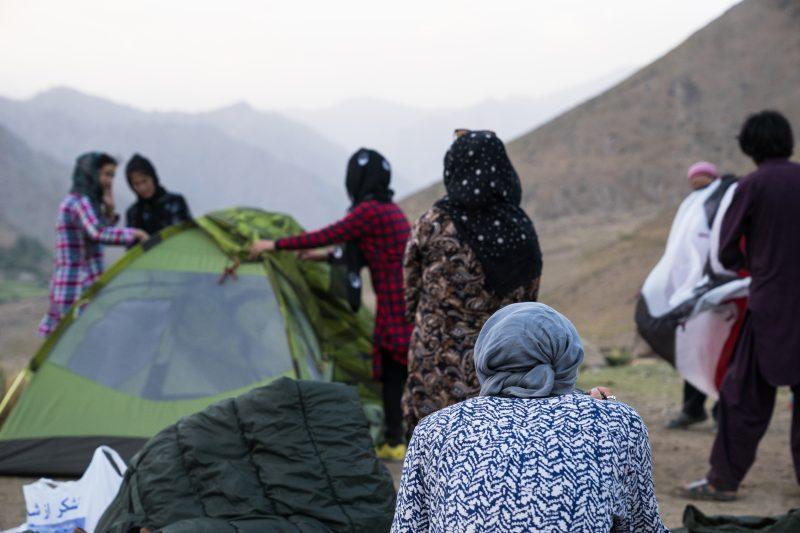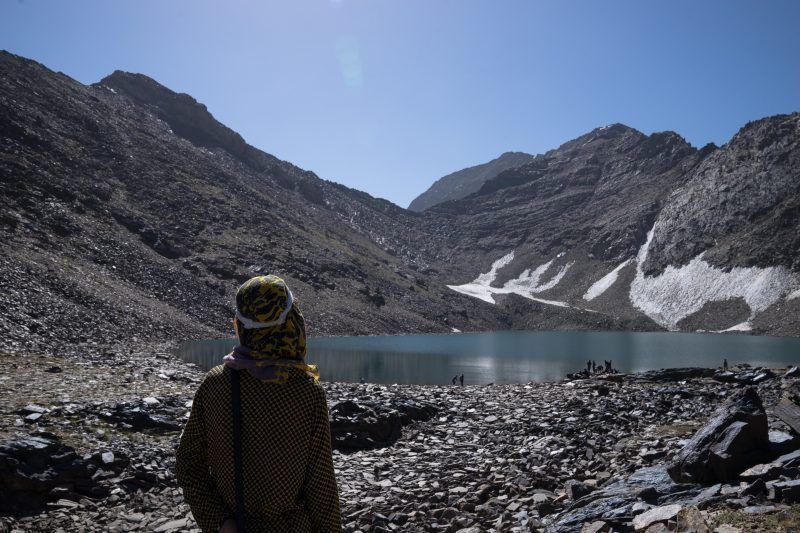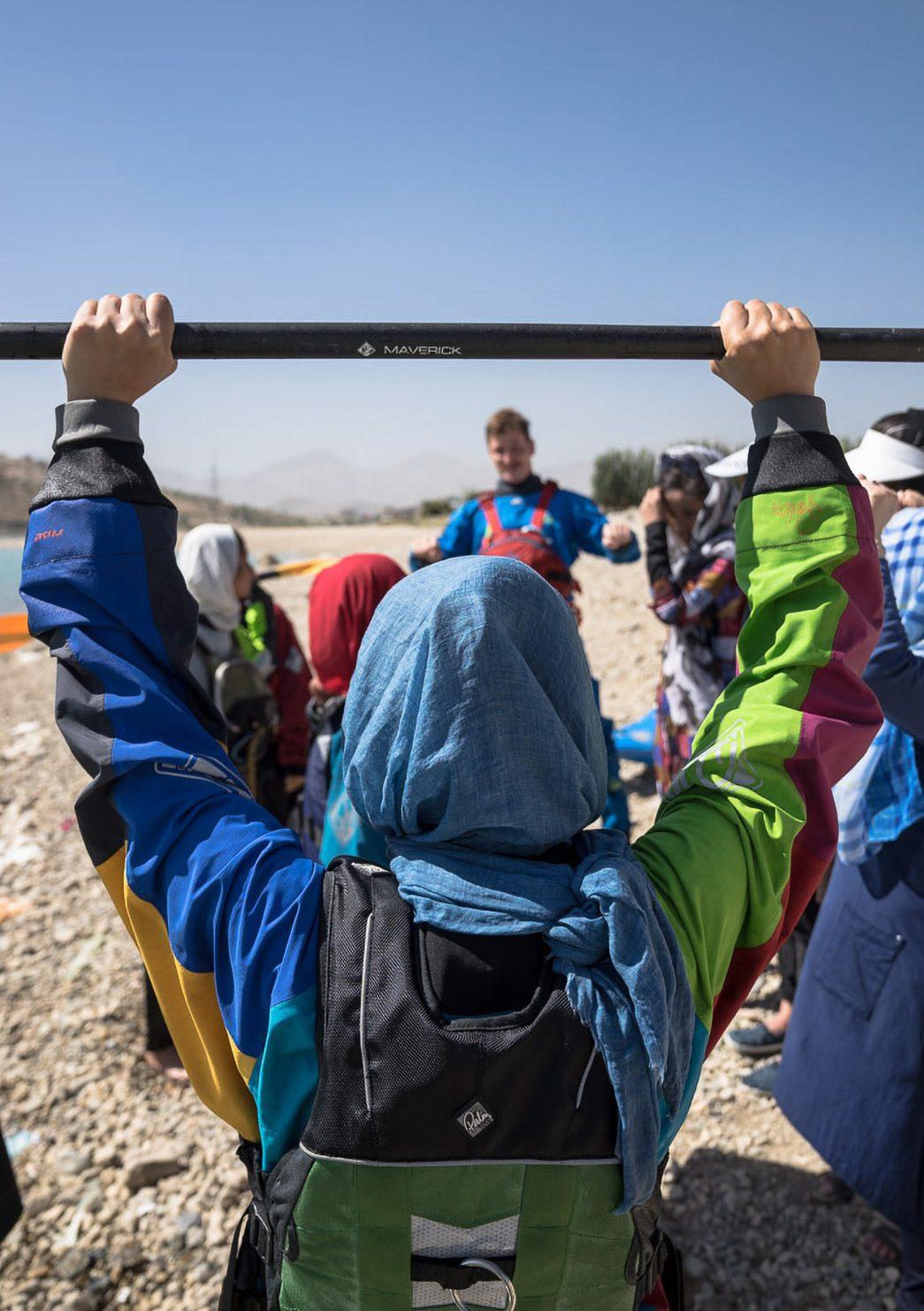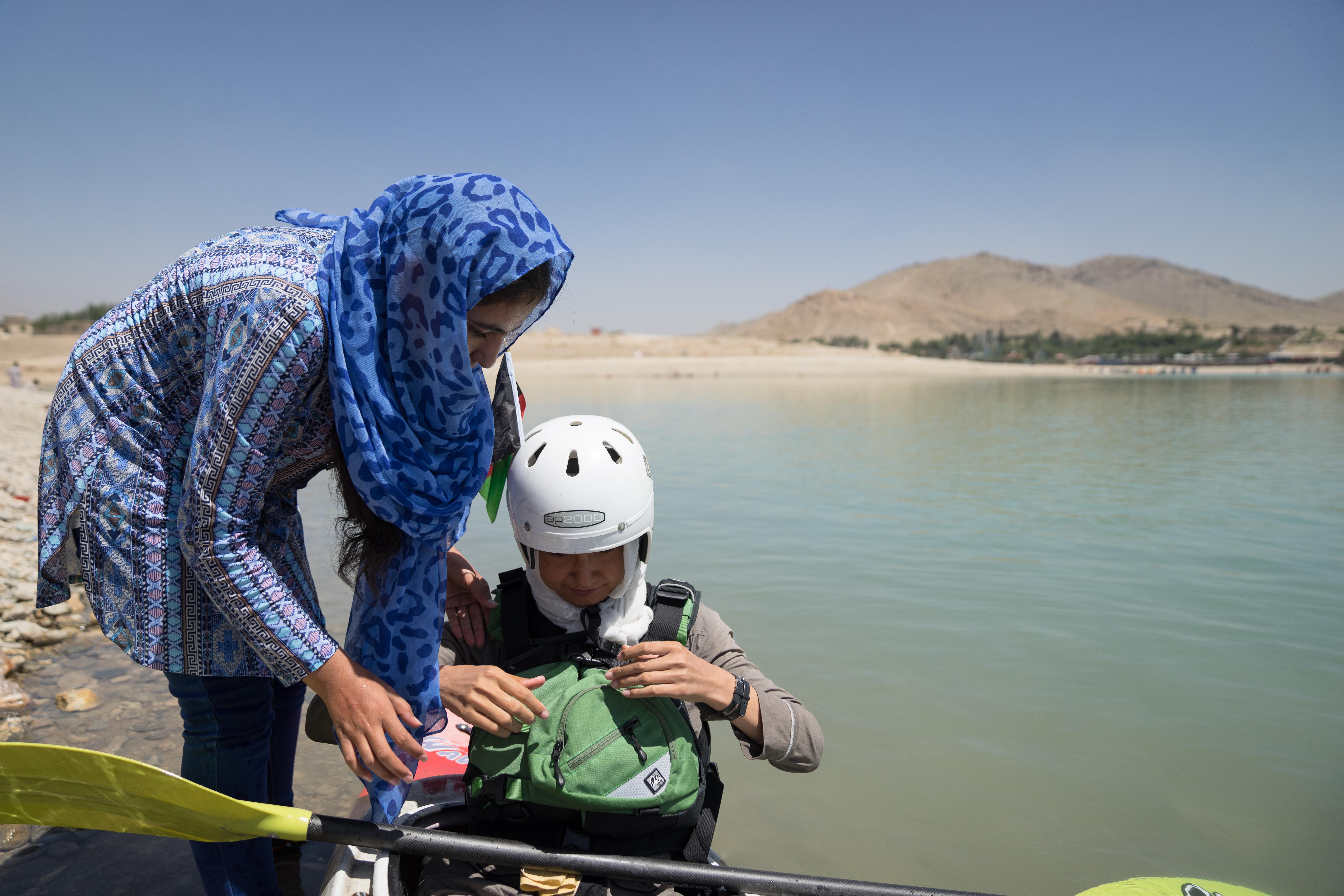Alongside Band Qargha lake, on the outskirts of Kabul, Joe Rea-Dickins puts paddles into hands for the first time …
As you might expect with the first ever attempt to teach women to kayak in Afghanistan, acquiring permissions were about as straightforward as solving algebra by chewing bubblegum. Our plan A was scuppered when the governor of the Panjshir Valley denied our request until we had the support of all village elders in Panjshir, and so a plan B was born – a hike to a high altitude lake, camping in a remote valley and a paddle on the outskirts of Kabul to finish it all off.

Panjshiri pop-outs
While waiting for our team of women to arrive in the Panjshir Valley, Kristof and I managed to sneak in a cheeky lap of the lower thirty kilometres of the Panjshi River. After four amazing hours of read and run through rural Afghanistan we hitched a lift up to the tomb of Ahmad Shah Massoud. Here we met our group of young Afghani athletes who were soaking up some Panjshiri history and paying respects to Afghanistan’s iconic war hero. We drove on into the mountains and set up camp above a traditional village that looked like it had hadn’t changed one bit in 1,000 years.

Setting up tents in the Dara Valley
Our hiking day was tough and eye opening. We were told on a few occasions that it was impossible for a group of women to hike to the lake at 4,425 metres altitude; the mountains are for the men. In the end, it was probably myself who might have had the hardest time on the walk, as I forgot my shoes and did the whole thing in flip flops. Our group of women were resilient, quite used to being told what they can’t do by men. We persevered on and reached the stunning lake, much to the surprise of the nae sayers.

The rewards of a gnarly hike in the Hindukush
With an incredible hike done and a couple of nights sleeping under the stars in the Dara Valley we headed back to the bright lights of Afghanistan’s capital city. While at a house party in the diplomatic enclave (life goal: tick), a private security consultant with biceps thicker than my thighs told me that Band Qargha, the location of our proposed kayak lesson, is a popular picnic spot for the Taliban.

Our kayaking day didn’t get off to the best start when we were nearly turned around on the road to the lake by a soldier who didn’t think sports were a woman’s game. Our minds were not eased when our promised security personnel never arrived. Add to this, our newbie kayakers were non-swimmers, so before any kind of kayak lessons could commence we had to start with a swimming lesson.

Less than ten minutes into our kayaking session there was a distinct change in atmosphere and our group of women from across Afghanistan went from nervously dipping their feet in the water to splashing about enthusiastically. With the swimming lesson out the way, we graduated to kayaking, beginning with a mandatory capsize to cast away any remaining fear of flipping. For a few hours, it didn’t feel like teaching the first group of Afghani women how to kayak, it just felt like a fun paddle with a group of teenagers, excited to be out on the water.
Palm supported the equipment taken to Afganistan by Freetorun.org, a charity whose mission is to use sports to empower and educate women and girls from conflict-affected communities. More from Free to Run over on their blog. Since our trip last summer, Free To Run have held a handful more kayak lessons, and our group have reportedly become excellent mini-instructors themselves. Thanks to Kristof Stursa for the photos.